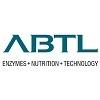Explore all the information on
Enzymes in poultry nutrition
Enzymes are proteins involved in all anabolic and catabolic pathways of digestion and metabolism. Digestive enzymes are categorised as endogenous or exogenous. Endogenous enzymes are produced by the animal and exogenous enzymes are administered from outside. Enzyme supplementation decreases nutrient loss through excreta, reduces diets nutritional levels, improves nutrient availability; thus, enhances production efficiency and profitability. In addition, exogenous enzymes hydrolyse non-starch polysaccharides, increase the usage of feed energy, reduce negative impacts of non-digestive residues on digesta viscosity, and improve gut microbial ecosystem. Cellulase, glucanase, pectinase, xylanase, galactisidases, phytase, non-starch polysaccharides degrading enzymes, amylase, lipase, cellulase, and protease are the most common enzymes used in poultry feed.
Life Rainbow is glad to invite you to attend a lecture titled "Biotechnological Development and Application of Mycotoxin Degrading Enzymes in Livestock", presented by Asst. Prof. Chung-Feng Chiang, Ph.D. from Department of Animal Science, National Pingtung...
Comments : 0
Recommendations: 2
Abiodun Bello (Danisco Animal Nutrition & Health, IFF) explains the results of his research on these enzymes and their impact on amino acid digestibility in this Engormix interview during IPPE 2025 in Atlanta, USA....
Comments : 0
Recommendations: 0
Some producers complain that their meat or egg type chickens suffer from problems in bone or egg shell quality when they include phytase in the diet as a partial substitute for the inorganic phosphorus sources (MCP; DCP; bone meal) according to the matrix value provided by the manufacturing company. Under field conditions, phytase activity is controlled by several parameters. This article will spot the light on utilization of phytase enzyme in poultry nutrition...
Comments : 26
Recommendations: 13
1. Introduction In poultry nutrition, soybean meal is one of the main protein sources used due to several factors such as the percentage of crude protein (CP), its good amino acid profile, and its bioavailability [1]. However, the existence of antinutritional factors (AF) in soybean meal has been shown to have a considerable effect in reducing the bioavailability of elements in this product, such as phosphorus [2]. There is a variety of AF, including lectin, raffinose, phytate,...
Comments : 0
Recommendations: 1
.jpg&w=3840&q=75)

(Mandarin) Strengthening Pellets for Better Feed Performance
Suggested link
Rajeev Verma, from ABTL, manages poultry feed operations across Northern India, focusing on high-production. With expertise in enzyme-based feed solutions, Raju addresses regional challenges like viral outbreaks and raw material price fluctuations, driving success and scientific advancements in the industry....
Comments : 0
Recommendations: 0
1. Introduction Coccidiosis is a parasitic disease caused by an apicomplexan parasite of the genus Eimeria, which infects different parts of the intestinal tract depending on the species of Eimeria [1]. Eimeria spp. invade intestinal cells and cause physical damage to the intestinal epithelium, producing hemorrhagic diarrhea and disrupting the normal functioning of the intestinal tract [2]. This leads to impaired nutrient absorption and compromised gut health [3]. On the other hand,...
Comments : 0
Recommendations: 1
Introduction Corn processing plays a pivotal role in the bioethanol industry, utilizing both wet and dry methods to extract valuable components from corn. Understanding the strengths and weaknesses of each approach is essential for producers aiming to optimize efficiency and product quality, particularly in the production of Distillers Dried Grains with Solubles (DDGS). In this article, we explore the two processing methods, their implications for DDGS production, and the...
Comments : 0
Recommendations: 1
1. Introduction Respiratory diseases control is crucial in all types of poultry including laying hens. Respiratory infections in layers can considerably impair bird health and welfare, as well as performance and hence profitability of flocks [1]. Although in broilers respiratory diseases mostly affect the respiratory tract itself, in layers respiratory infections affect both the airways and the oviduct [2]. Therefore, respiratory disease can have a significant economic...
Comments : 0
Recommendations: 0


DL-methionine can replace methionine-hydroxy anlalog products in a ratio of 65:100 in laying hen fee
Suggested link
As global animal production has rapidly shifted towards reduced Antibiotic free, “Gut health” has become a popular expression and all-encompassing concept in the scientific community. The gastro-intestinal tract must provide a barrier function protecting against harmful environmental elements (e.g. toxins and pathogenic microbes), while simultaneously permitting appropriate nutrient absorption. Successful animal performance depends on the interplay between the intestine,...
Comments : 41
Recommendations: 15
Who has any idea about how matrix value of enzymes is calculated? What is this matrix value? How is it important in relation to animal feeds?...
Comments : 24
Recommendations: 2
Good Evening I have a question regarding using the phytase matrix value in the least cost formulation software. Should I enter the Calcium value, or should I leave it Zero? Dealing with the calcium figure is not like the others, because we don't have Total calcium, and available calcium in the formulation, we have only calcium which will assume that it is 100% available. for the energy, we have Total energy and ME, for phosphorus we have the total and the available, Amino acids we have total...
Comments : 56
Recommendations: 9
John Boney (Penn State University) comments on nutrient segregation, feed quality, pellet degradation, and on-farm feed sampling methods, in this Engormix interview....
Comments : 7
Recommendations: 3
Hello Friends, I need technical matter and literature about physiology and mode of action of alpha Chemotrypsin as bronchodilator and mucolytic. Kindly share any details about alpha Chemotrypsin ...
Comments : 0
Recommendations: 0
DESCRIPTION OF PROBLEM A principal goal of nutritionists is to provide birds with a balanced diet that maximizes production at the least cost. Meat bird performance is maximized when feeding pelleted diets (Patton et al., 1937; Hussar and Robblee, 1962; Jensen et al., 1962). However, the nutritional value of feed presented to birds in feed pans throughout the house may not align with diet formulation due to mixer uniformity, feed line length, pellet degradation, and subsequent...
Comments : 0
Recommendations: 1
Rick Kleyn (Consultant at Spesfeed) explains the importance of proper management as a first step and how probiotics and enzymes play a role in keeping gut health, in this Engormix interview....
Comments : 1
Recommendations: 2
I. INTRODUCTION The inclusion of alternative ingredients such as rice bran, DDGs and sunflower meal in layer diets, to reduce feed cost, can result in higher phytate levels, potentially limiting availability of minerals, protein and energy, all of which are important to maintain egg production, eggshell strength and bone strength (Bello and Korver, 2019). Phytase enzymes are commonly used in the animal feed industry primarily to increase phosphorus (P) availability from plant...
Comments : 0
Recommendations: 0
I. INTRODUCTION A shortage and rising cost of major feed ingredients triggers more pressure on local poultry industries to maximize the use of alternative feed ingredients. Cassava is a potential alternative to corn. It is a good source of energy, with 60-70% of starch & 2-4 % of crude fiber (Staack et al, 2019). However, it has low protein (2%) with low methionine content (0.03%) (Morgan and Choct, 2016). When cassava meal is used at a high level, more SBM is needed to meet...
Comments : 0
Recommendations: 0
I. INTRODUCTION Non-starch polysaccharides (NSPs) are major components of dietary fibre found in feed ingredients that consist of both soluble and non-soluble polysaccharides. NSPs possess antinutritive properties that can hinder bird performance and alter gut physiology. These antinutritive properties include high gut viscosity, encapsulation of starch and amino acids, sticky droppings, modification of gut physiology, and an overall reduction in bird performance. Feed enzymes...
Comments : 0
Recommendations: 0
...
Comments : 0
Recommendations: 0
I. INTRODUCTION Soybean meal (SBM) is the most important plant protein source in broiler diets. Although most of the proteins in SBM are highly digestible, some proteins including glycinin, protease inhibitors, and antigenic proteins are indigestible and can cause intestinal damage and impair immune functions resulting in sub-optimal growth performance (Pan et al., 2016). The supplementation of SBM with appropriate commercially available proteases provides a potential strategy to...
Comments : 0
Recommendations: 1

.jpg&w=3840&q=75)

















.jpg&w=3840&q=75)


















